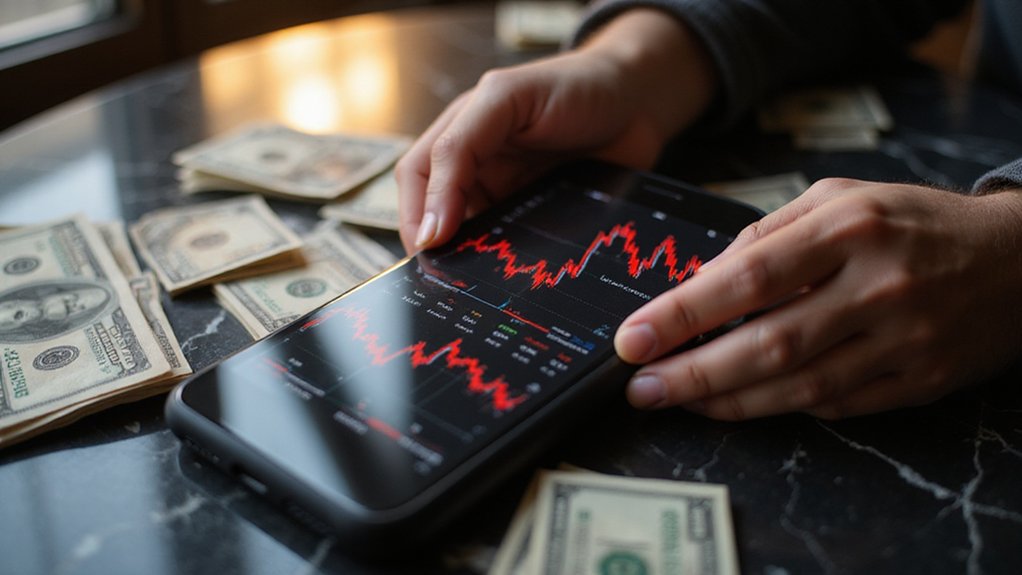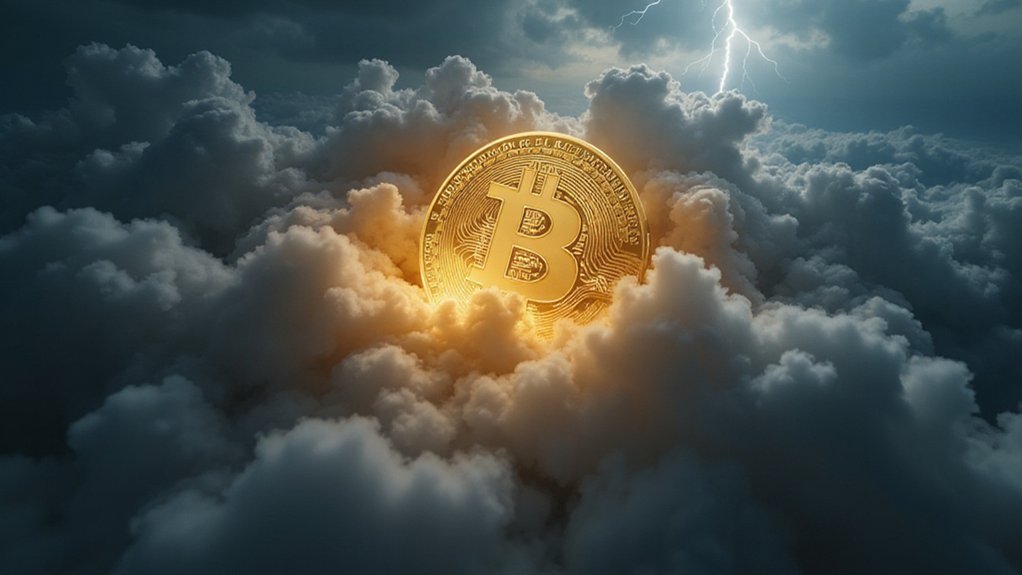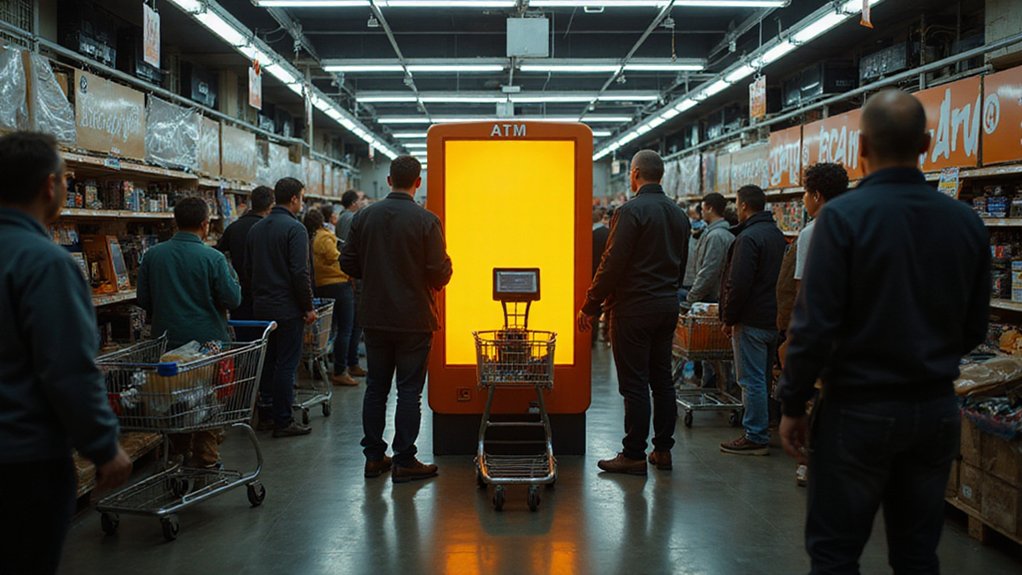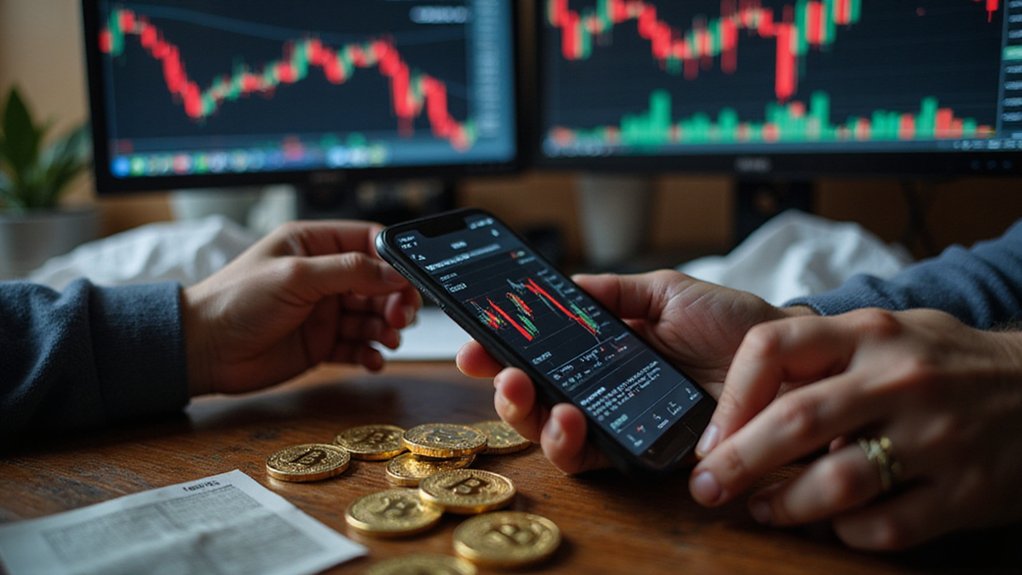While Bitcoin’s meteoric ascent to nearly $109,000 in early 2025 might have seemed like vindication for cryptocurrency evangelists, the subsequent market convulsions have served as a sobering reminder that digital assets remain as temperamental as ever.
Bitcoin’s stratospheric rise to $109,000 proved fleeting, as subsequent volatility reminded investors that digital assets remain stubbornly unpredictable.
The cryptocurrency market’s total capitalization, which swelled to an impressive $3.33 trillion by late 2024, has since exhibited the kind of volatility that would make seasoned traders reach for antacids.
The February 2025 Bybit hack—a staggering $1.5 billion breach—accelerated market declines with the efficiency of a financial wrecking ball, demonstrating how quickly confidence can evaporate in an ecosystem built largely on trust and speculation. Exchange hacks represent one of the most persistent threats to crypto investors, with minimal consumer protection leaving them vulnerable to immediate theft risks that complicate recovery efforts.
This incident, coupled with macroeconomic headwinds and regulatory uncertainty, has pushed the market cap into a nauseating dance between $3.4 trillion and $3.8 trillion, leaving investors wondering whether they’re witnessing natural growing pains or the prelude to something more catastrophic.
Regulatory developments continue wielding outsized influence over market sentiment, creating a peculiar situation where bureaucratic announcements can trigger billion-dollar swings faster than actual technological breakthroughs.
The SEC’s approval of Bitcoin and Ether ETFs in 2024, initially hailed as legitimizing validation, has introduced new compliance complexities that make the market increasingly sensitive to regulatory shifts.
Meanwhile, the reduction of Ripple Labs’ SEC fine from $2 billion to $150 million highlights the arbitrary nature of regulatory enforcement—and its profound market implications.
Institutional players present a fascinating contradiction: MicroStrategy continues accumulating Bitcoin with religious fervor, while ETF flows tell a schizophrenic story of $4.5 billion in January inflows followed by significant outflows in subsequent months.
This institutional ambivalence reflects broader uncertainty about whether current volatility represents healthy market maturation or warning signs of systemic instability. The dramatic Bitcoin dominance surge from 53.54% to 62.8% during Q1 further underscores this concentration of investor confidence in the flagship cryptocurrency amid broader market turmoil.
The convergence of inflation concerns, delayed Federal Reserve rate cuts, and escalating global trade tensions has created a perfect storm of macroeconomic pressures. Sophisticated traders increasingly rely on real-time data to navigate this treacherous landscape, as traditional analysis methods prove inadequate for capturing the rapid sentiment shifts that characterize today’s crypto markets.
When geopolitical instability meets speculative assets already prone to dramatic price swings, the result is a market that seems perpetually teetering on the edge of either spectacular triumph or spectacular collapse—with precious little middle ground for those seeking stability.








